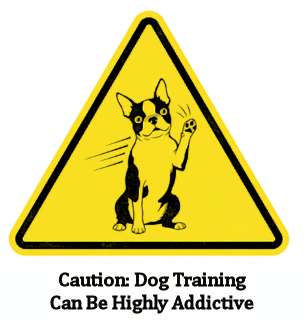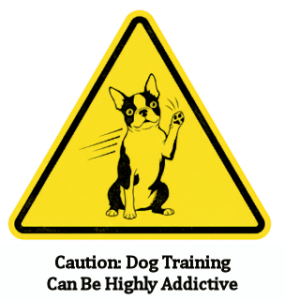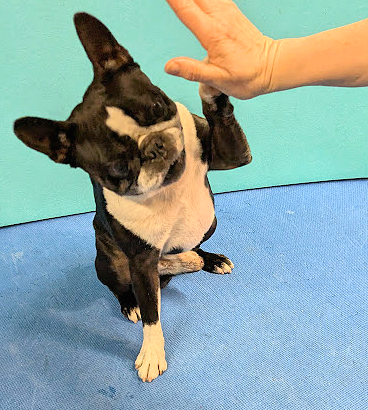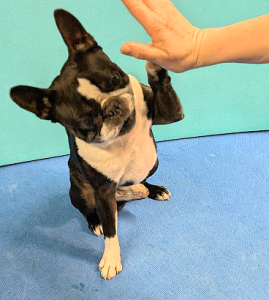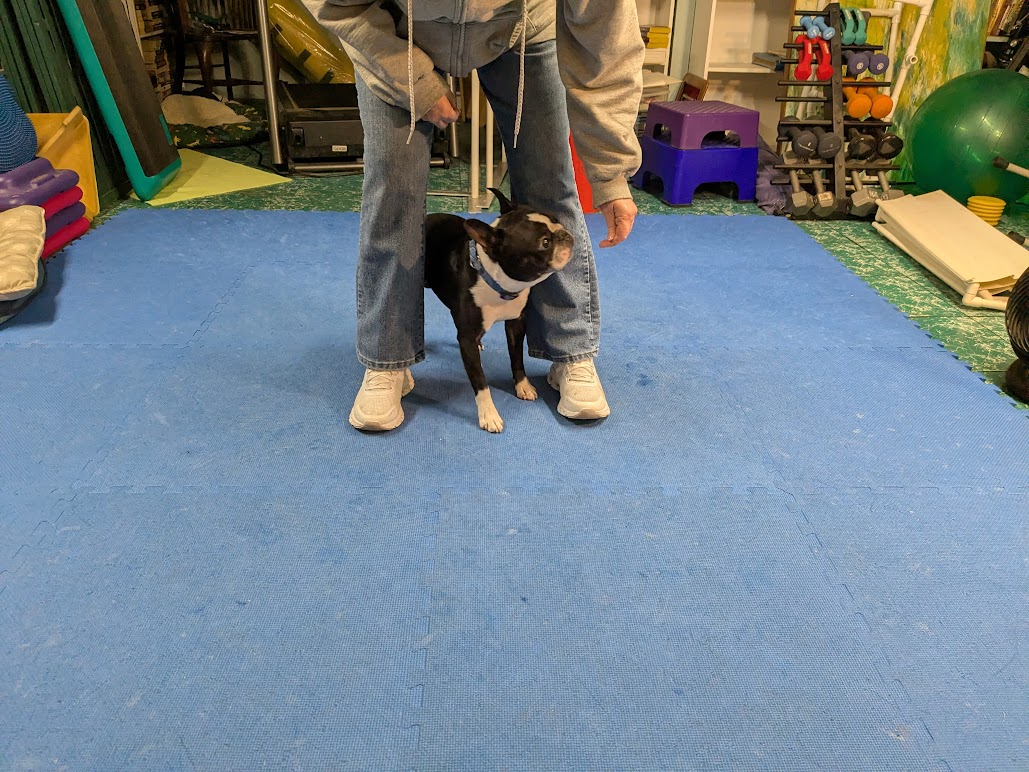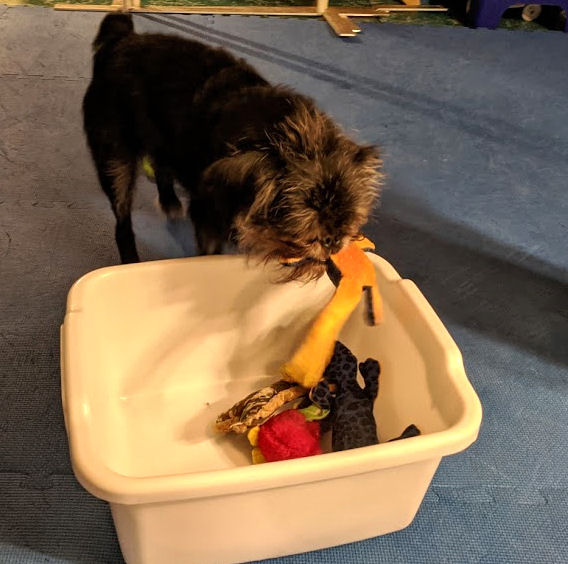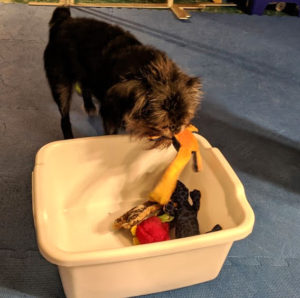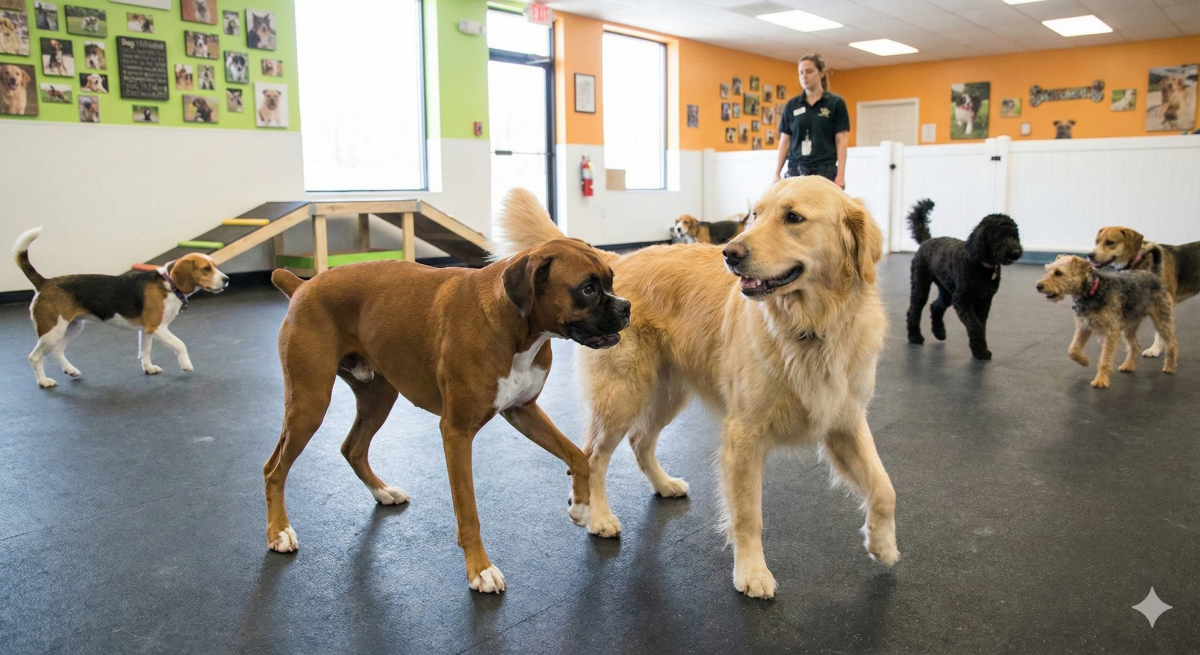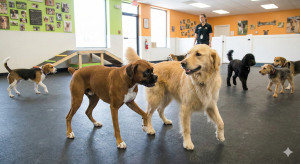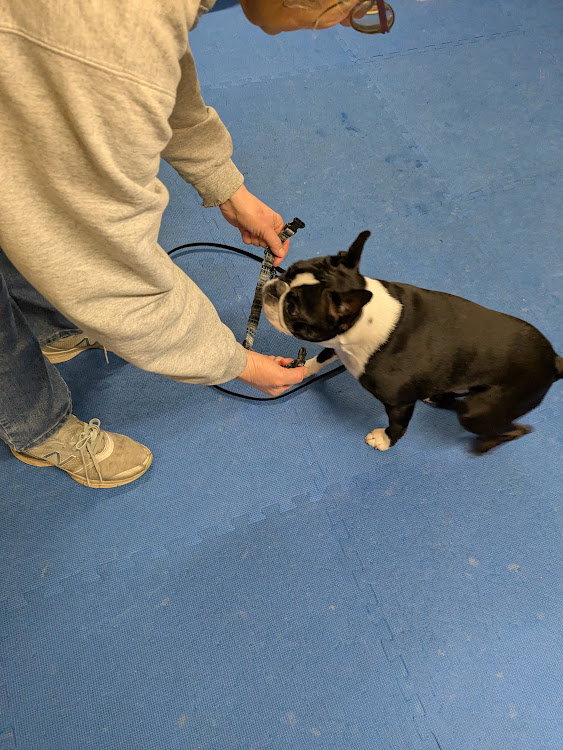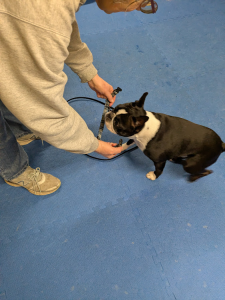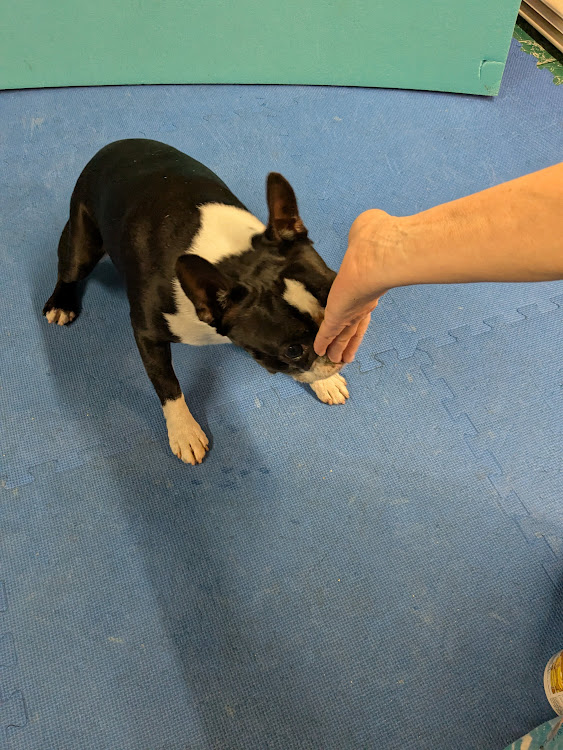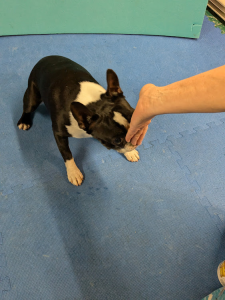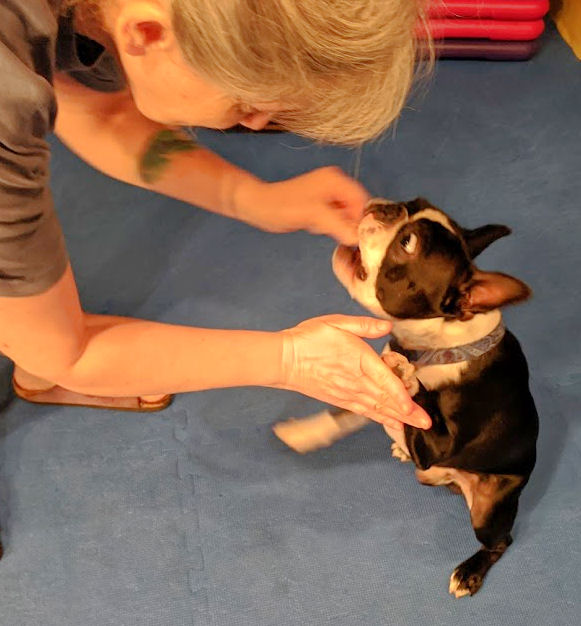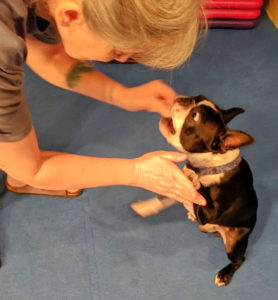Dogs always do what’s most rewarding for them. Our “job” as dog owners is to make what we want the most rewarding option.
One of the most common rude dog behaviors is jumping on people. For dogs, it gets them exactly what they want: attention. Dogs don’t really care if that attention is yelling at them, or batting at their feet, or even shoving their chest. For your dog, who loves you, any attention you pay to them is wonderful. That’s unconditional love.
Change is hard
To get your dog to stop the behavior, you have to make something else more gratifying than jumping. It’s time to play “4 On The Floor.”
With a bunch of really yummy treats in hand, walk into the room where your dog is hanging out. Get your dog all excited, by whatever means necessary. Talk excitedly, jump around, pretend to throw a ball, whatever gets your dog to perk up and pay attention.
When the dog is standing, lean over very close to your dog and start feeding high-value treats. One after another. Be sure you don’t stand up, you don’t want your vertical motion to trigger your dog’s jumping. Let your dog know the cue for standing there getting fed: “Good 4 On The Floor.” “Nice 4 On The Floor.” “I like your 4 On The Floor.”
Use whatever cue you want for the behavior. We use “4 On The Floor” because it describes what we want and everybody knows what it means. It is longer than most dog cues, so choose one that works for you.
Watch carefully
Your dog may get all excited and start to jump up. If they show signs of jumping, freeze in place. Stop rewarding and wait. If your dog does jump on you, try not to move. Don’t say anything. Ignore the behaviors you don’t want. It’s tough, especially if you have a big, powerful dog. But be patient.
When the rude behavior gets the dog nothing, chances are they’ll go back to what they were doing – standing there and getting treats. As soon as the dog has four feet on the floor, go back to rewarding and praising, giving your dog the cue you’ve decided on.
Dogs catch on quickly
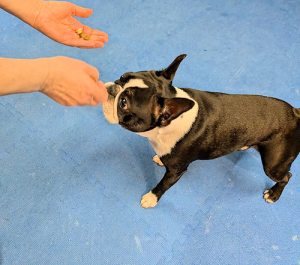
After just a couple of times, your dog should start recognizing the cue “4 On The Floor.” When you’re pretty sure they have the idea, recruit someone the dog knows to help out. If the person is okay with it, have them do exactly the same thing, bending over and repeatedly rewarding. If the person can’t, or won’t, then you bend and reward as long as the dog has “4 On The Floor.”
You’re building a new behavior that the dog will find more rewarding than jumping. They get the attention they crave, as well as many treats, for behaving politely. It becomes the most attractive option for the dog.
Expand the experience
When your dog is pretty good about staying off of people at home, add on by having someone come in the front door. Entries and exits are the most likely times for dogs to jump on people, so it’s up to us to make it normal to greet people with all four feet on the floor.
Once your dog is proficient at entries and exits, it’s tempting to take it for granted. If you completely stop rewarding, the dog will revert to behavior that’s more fun for them. You won’t have to reward every time, or multiple treats all the time. You do have to randomly reinforce good behavior to maintain it. Dogs live in hope that something good is coming their way. If they’re good, make that wish come true. At least every once in a while.


